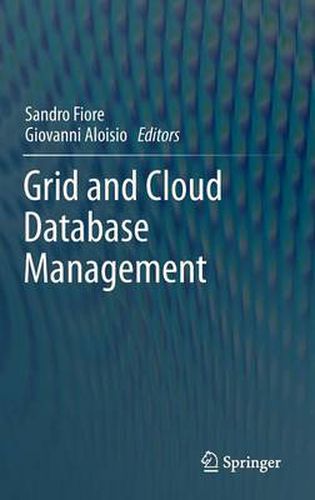Readings Newsletter
Become a Readings Member to make your shopping experience even easier.
Sign in or sign up for free!
You’re not far away from qualifying for FREE standard shipping within Australia
You’ve qualified for FREE standard shipping within Australia
The cart is loading…






This title is printed to order. This book may have been self-published. If so, we cannot guarantee the quality of the content. In the main most books will have gone through the editing process however some may not. We therefore suggest that you be aware of this before ordering this book. If in doubt check either the author or publisher’s details as we are unable to accept any returns unless they are faulty. Please contact us if you have any questions.
Since the 1990s Grid Computing has emerged as a paradigm for accessing and managing distributed, heterogeneous and geographically spread resources, promising that we will be able to access computer power as easily as we can access the electric power grid. Later on, Cloud Computing brought the promise of providing easy and inexpensive access to remote hardware and storage resources. Exploiting pay-per-use models and virtualization for resource provisioning, cloud computing has been rapidly accepted and used by researchers, scientists and industries.
In this volume, contributions from internationally recognized experts describe the latest findings on challenging topics related to grid and cloud database management. By exploring current and future developments, they provide a thorough understanding of the principles and techniques involved in these fields. The presented topics are well balanced and complementary, and they range from well-known research projects and real case studies to standards and specifications, and non-functional aspects such as security, performance and scalability. Following an initial introduction by the editors, the contributions are organized into four sections: Open Standards and Specifications, Research Efforts in Grid Database Management, Cloud Data Management, and Scientific Case Studies.
With this presentation, the book serves mostly researchers and graduate students, both as an introduction to and as a technical reference for grid and cloud database management. The detailed descriptions of research prototypes dealing with spatiotemporal or genomic data will also be useful for application engineers in these fields.
$9.00 standard shipping within Australia
FREE standard shipping within Australia for orders over $100.00
Express & International shipping calculated at checkout
This title is printed to order. This book may have been self-published. If so, we cannot guarantee the quality of the content. In the main most books will have gone through the editing process however some may not. We therefore suggest that you be aware of this before ordering this book. If in doubt check either the author or publisher’s details as we are unable to accept any returns unless they are faulty. Please contact us if you have any questions.
Since the 1990s Grid Computing has emerged as a paradigm for accessing and managing distributed, heterogeneous and geographically spread resources, promising that we will be able to access computer power as easily as we can access the electric power grid. Later on, Cloud Computing brought the promise of providing easy and inexpensive access to remote hardware and storage resources. Exploiting pay-per-use models and virtualization for resource provisioning, cloud computing has been rapidly accepted and used by researchers, scientists and industries.
In this volume, contributions from internationally recognized experts describe the latest findings on challenging topics related to grid and cloud database management. By exploring current and future developments, they provide a thorough understanding of the principles and techniques involved in these fields. The presented topics are well balanced and complementary, and they range from well-known research projects and real case studies to standards and specifications, and non-functional aspects such as security, performance and scalability. Following an initial introduction by the editors, the contributions are organized into four sections: Open Standards and Specifications, Research Efforts in Grid Database Management, Cloud Data Management, and Scientific Case Studies.
With this presentation, the book serves mostly researchers and graduate students, both as an introduction to and as a technical reference for grid and cloud database management. The detailed descriptions of research prototypes dealing with spatiotemporal or genomic data will also be useful for application engineers in these fields.